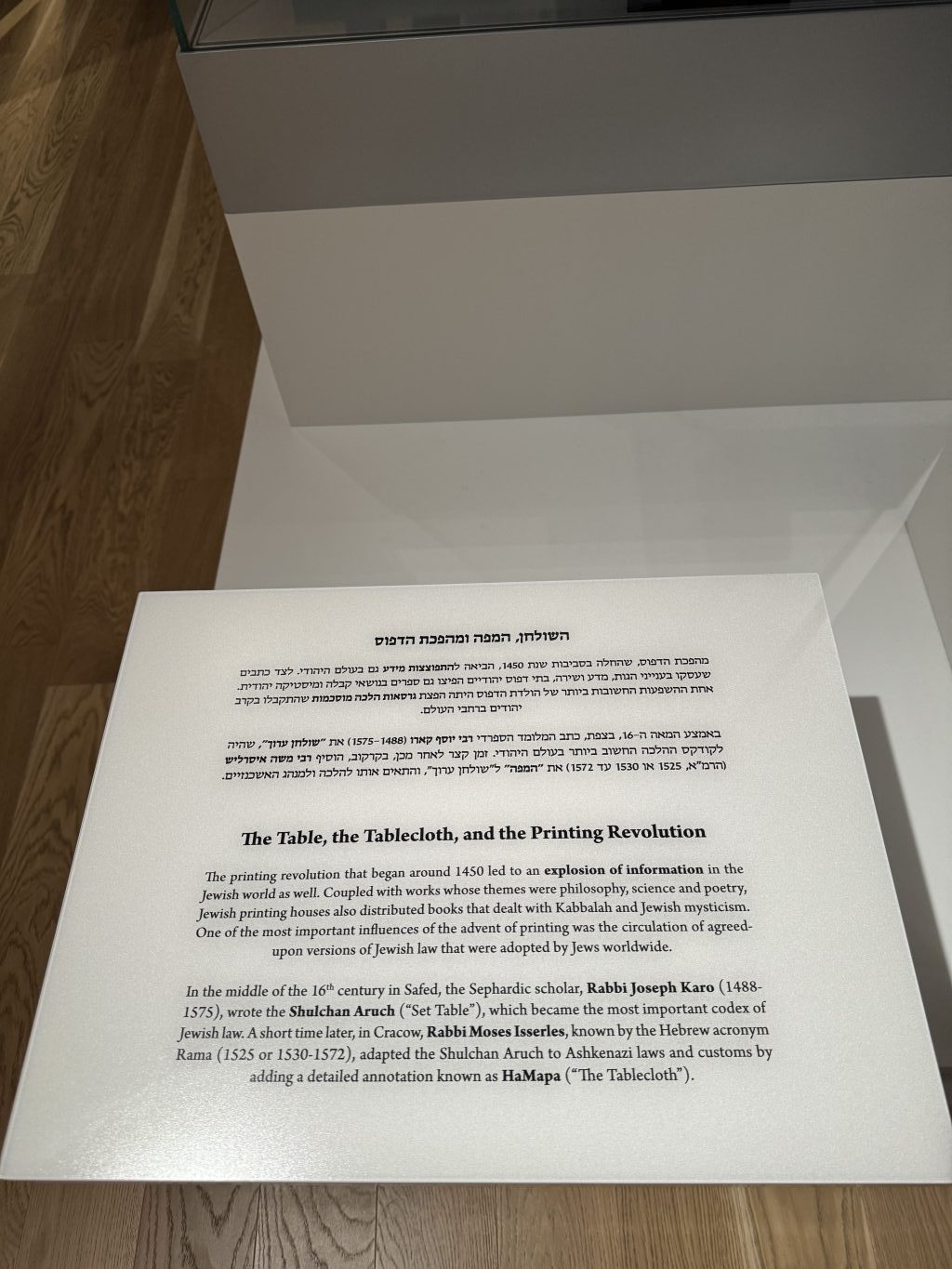Text Panel
The printing revolution that began around 1450 led to an explosion of information in the Jewish world as well. Coupled with works whose themes were philosophy, science and poetry, Jewish printing houses also distributed books that dealt with Kabbalah and Jewish mysticism. One of the most important influences of the advent of printing was the circulation of agreed-upon versions of Jewish law that were adopted by Jews worldwide.
In the middle of the 16th century in Safed, the Sephardic scholar, Rabbi Joseph Karo (1488-1575), wrote the Shulchan Aruch (“Set Table”), which became the most important codex of Jewish law. A short time later, in Cracow, Rabbi Moses Isserles, known by the hebrew acronym Rama (1525 or 1530-1572), adapted the Shulchan Aruch to Ashkenazi laws and customs by adding a detailed annotation known as HaMapa (“The Tablecloth”).

